Long before CGI made digital characters commonplace, certain non-human personalities captured our hearts and became household names. These beloved characters—whether they had four legs, fins, or were simply animated drawings—somehow connected with us on a deeply human level. From the family dog next door to the cartoon mouse who built an entertainment empire, these iconic figures transcended their non-human status to become genuine cultural touchstones that defined generations.
1. Lassie
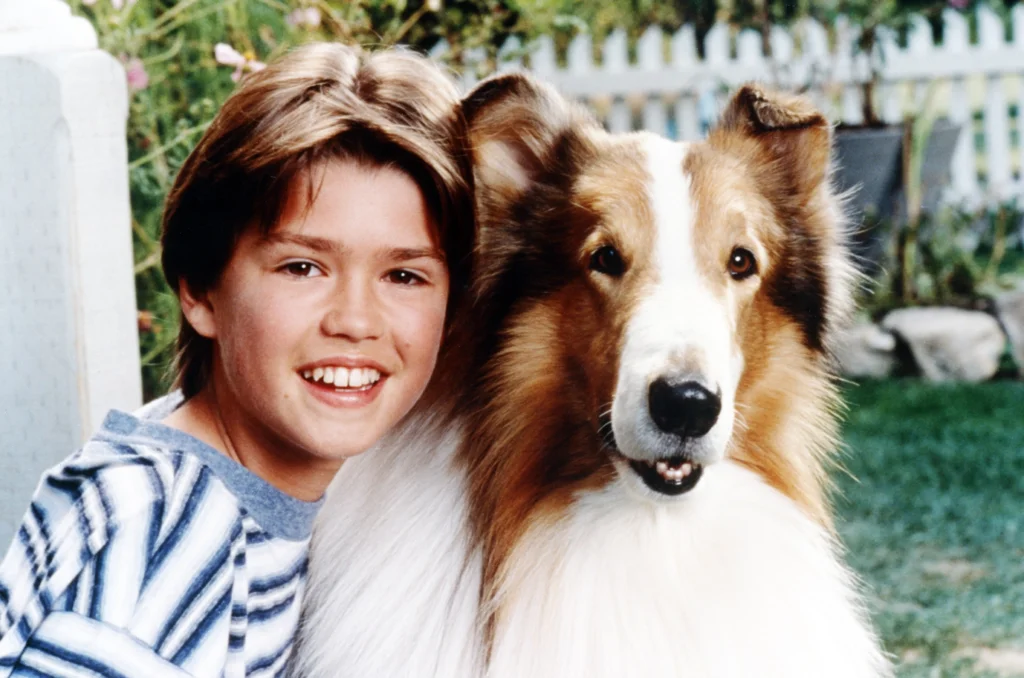
That iconic collie with the flowing coat didn’t just save little Timmy from the well—she saved the entire concept of dogs as loyal, intelligent heroes for generations of television viewers. First appearing in a 1940 novel, then in a series of films, Lassie reached her zenith of fame during her television series that ran from 1954 to 1973, making her perhaps the most recognized canine in entertainment history. The clever border collie actually playing Lassie was usually male (the original being Pal, followed by his descendants), despite portraying a female dog, because male collies maintained thicker, more camera-friendly coats throughout the year. Closer Weekly fetches information on the lives of the stars who made this canine series so iconic.
Lassie’s impact went far beyond entertainment, influencing how Americans viewed their relationship with dogs and setting the gold standard for canine intelligence and loyalty. Children would beg their parents for collies, rescue organizations saw adoption spikes after emotional episodes, and “as loyal as Lassie” became a genuine compliment in everyday conversation. Her signature move—racing home to bark a complex message that adults somehow perfectly understood—became so ingrained in popular culture that it remains a comedy trope even for those who never watched the original show.
2. Flipper
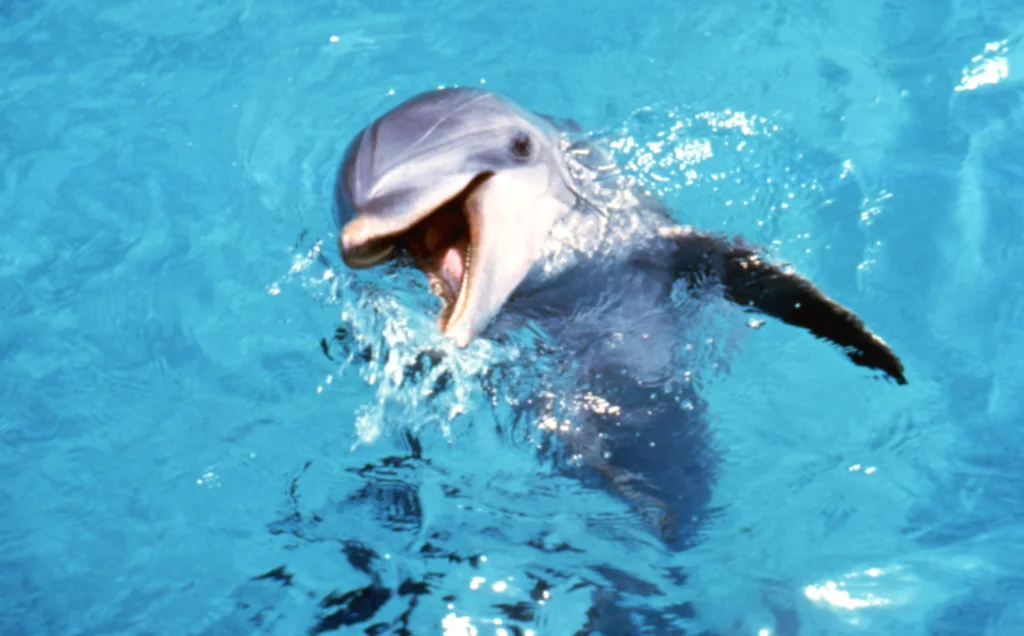
Before we worried about ocean conservation, one bottlenose dolphin taught us that marine mammals could be our friends, our rescuers, and our entertainment all rolled into one sleek package. Flipper swam into America’s living rooms from 1964 to 1967, starring in a television series that essentially reimagined “Lassie with fins” at the Porter family’s fictional marine preserve in Florida. The role was actually played by five different female dolphins (though mostly by a male dolphin named Mitzie), trained by Ricou Browning and his assistant who developed the famous tail-walk and other signature moves that delighted viewers. Ranker took a dip into memory lane to track the careers of the show’s cast after the series ended.
The show’s catchy theme song (“They call him Flipper, Flipper, faster than lightning…”) became an earworm for an entire generation who suddenly viewed dolphins as magical, almost-human creatures worthy of protection. Flipper’s ability to understand complex human problems, rescue children in danger, and communicate through a series of chirps and chitters made families feel like they too could befriend these intelligent creatures if given the chance. Marine parks across America saw attendance surge in Flipper’s wake, with children everywhere making that distinctive chattering noise with their tongues against the roof of their mouth, convinced they were speaking “dolphin.”
3. Smokey Bear
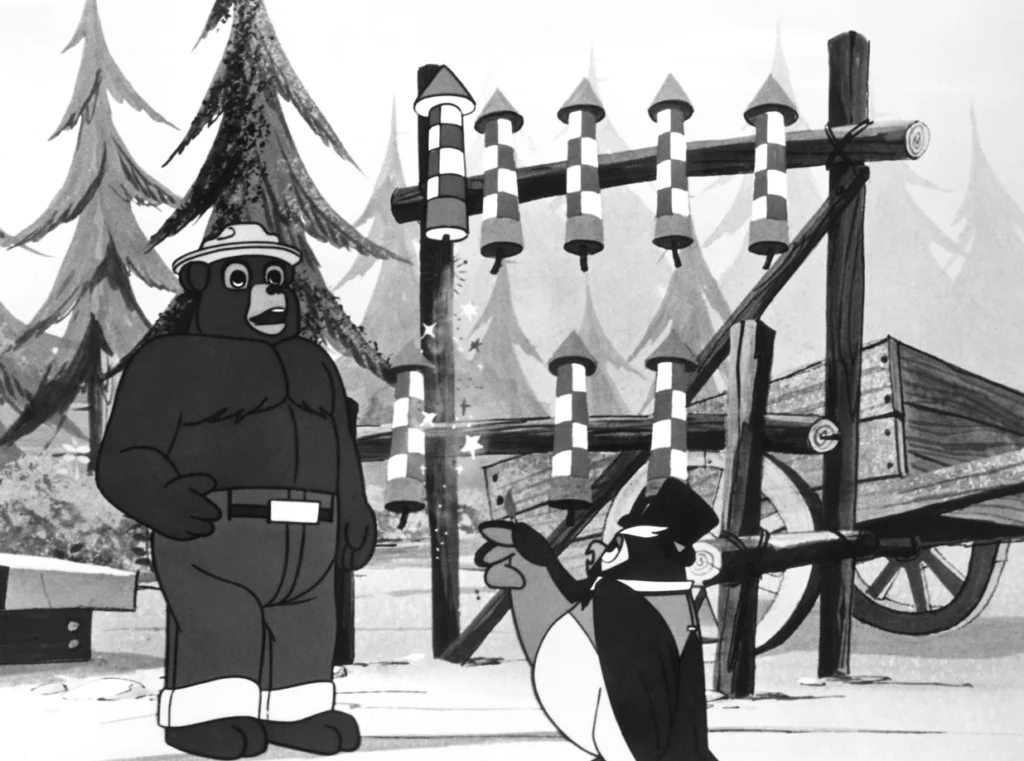
With his ranger hat, blue jeans, and stern reminder that “Only YOU can prevent forest fires,” this anthropomorphic bear became America’s longest-running public service announcement. Created in 1944 by the U.S. Forest Service and the Ad Council, Smokey’s message resonated so deeply that forest fire prevention became embedded in the national consciousness for generations of children. The character gained additional emotional depth when, in 1950, a real bear cub was rescued from a New Mexico wildfire with burned paws and subsequently named Smokey, living out his life at the National Zoo as the campaign’s living symbol. Just last year, Infillion celebrated Smokey’s 80th birthday as America’s longest-running PSA campaign.
Smokey’s simple yet authoritative presence made learning about fire safety feel less like a lecture and more like advice from a trusted friend who happened to be a talking bear. His image appeared everywhere from classroom posters to roadside billboards, while his deep voice (provided for many years by Jackson Weaver) became instantly recognizable as he intoned his famous catchphrase. Smokey remains one of the most successful advertising campaigns in history, with recognition levels over 95% among Americans, demonstrating how a fictional animal character could influence real human behavior more effectively than any human spokesperson.
4. Mr. Ed
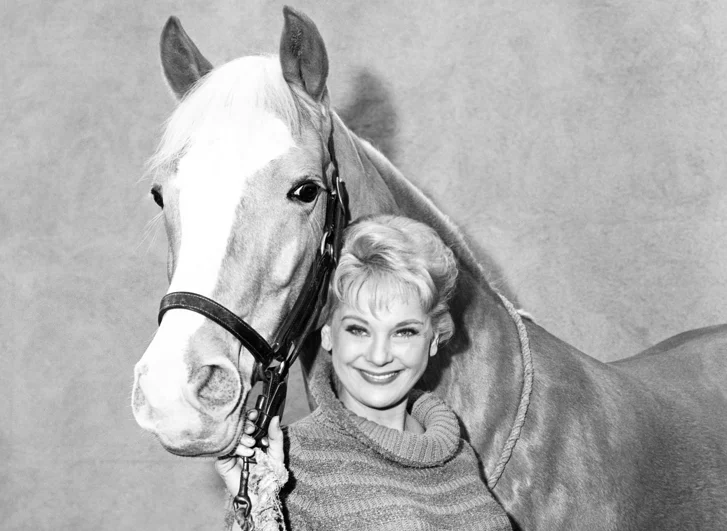
“A horse is a horse, of course, of course, unless of course, the horse is the famous Mr. Ed”—and with that catchy theme song, a talking palomino trotted into television history. Running from 1961 to 1966, this sitcom featured the world’s most famous talking horse, who would speak only to his owner Wilbur Post (played by Alan Young), leading to countless comedic situations when others couldn’t understand why Wilbur was having lengthy conversations with his stable-dwelling friend. The secret to making Mr. Ed appear to talk reportedly involved placing a nylon thread in his mouth initially, though later the well-trained horse learned to move his lips whenever his trainer touched his hoof.
Mr. Ed (actually played by a horse named Bamboo Harvester) delivered his lines with perfect comedic timing, often displaying more common sense than his human counterpart. His deep voice, provided by former Western film actor Allan “Rocky” Lane, gave him a distinctive personality—slightly mischievous, certainly opinionated, but ultimately good-hearted—that made viewers almost believe a horse could indeed talk. The show’s premise might seem silly in retrospect, but Mr. Ed’s personality was so compelling that fans readily suspended disbelief to enjoy the simple pleasure of a horse outsmarting humans week after week.
5. Mickey Mouse

That distinctive silhouette of two round ears atop a circular head became not just a cartoon character but the foundation of the world’s largest entertainment empire. Created by Walt Disney and Ub Iwerks in 1928, Mickey first appeared in “Steamboat Willie,” one of the first cartoons with synchronized sound, where his whistling and music-making immediately established him as a character with personality beyond the typical animated stars of the silent era. His cheerful voice (performed by Walt Disney himself until 1947), white gloves, red shorts, and yellow shoes created an instantly recognizable figure that transcended animation to become a cultural symbol.
Mickey’s evolution from mischievous cartoon mouse to corporate ambassador reflected America’s own journey through the 20th century. As Mickey’s personality softened from his early prankster days to become more wholesome, he nevertheless remained the cornerstone of Disney’s expanding universe, appearing in over 130 films and countless comics, television shows, video games, and theme park attractions. Children worldwide grew up knowing Mickey’s laugh and signature “Hot dog!” exclamation, making him possibly the most recognized fictional character globally—an impressive achievement for a simple mouse drawn with three circles who celebrated his 90th birthday in 2018 with more cultural relevance than most human celebrities.
6. Kermit the Frog
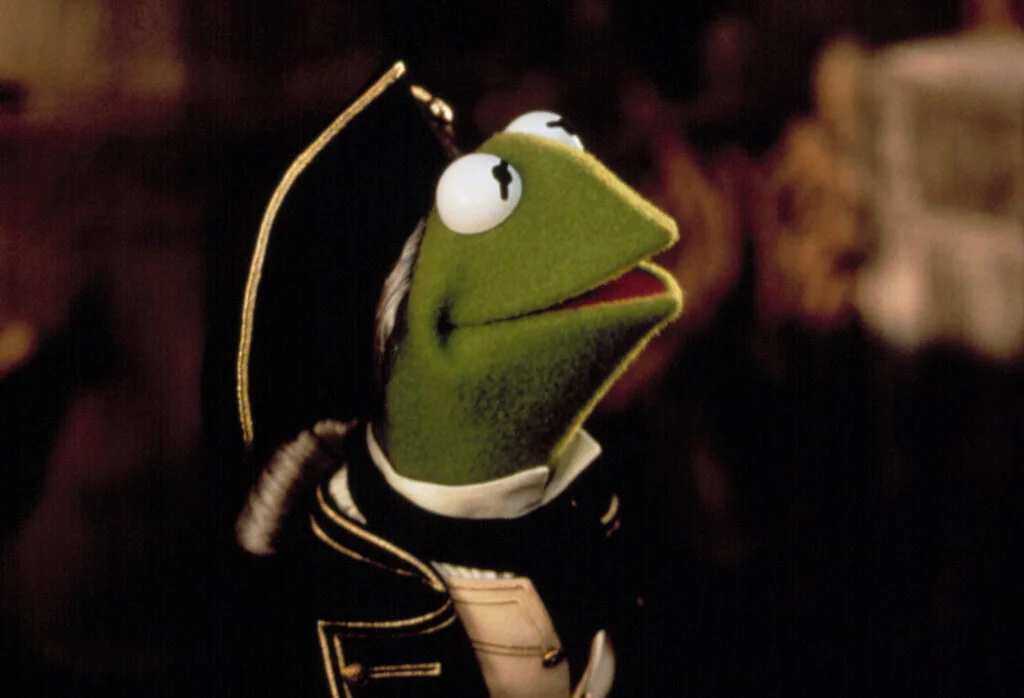
That small green amphibian with the distinctive collar and expressive eyes taught generations that it might not be easy being green, but it was certainly worth the effort. Created by Jim Henson in 1955, Kermit began as a simple hand puppet made from an old coat and two ping pong balls before evolving into the felt and foam personality who would anchor “The Muppet Show” from 1976 to 1981, alongside starring in numerous films and television specials. Henson’s gentle voice and subtle puppetry gave Kermit a nuanced personality that ranged from exasperated showrunner to romantic dreamer, establishing him as the emotional heart of the Muppet ensemble.
Kermit’s relationship with the volatile Miss Piggy became one of entertainment’s most enduring romances, while his friendship with Fozzie Bear and administrative battles with the Great Gonzo showcased his patience and leadership. His banjo-accompanied rendition of “Rainbow Connection” from 1979’s “The Muppet Movie” became an anthem of gentle optimism that still resonates with audiences decades later. After Henson’s passing in 1990, Kermit continued under different performers, but his core identity as the level-headed frog trying to create order from chaos remained intact—proving that the character’s appeal transcended even his creator’s singular talent.
7. Bugs Bunny
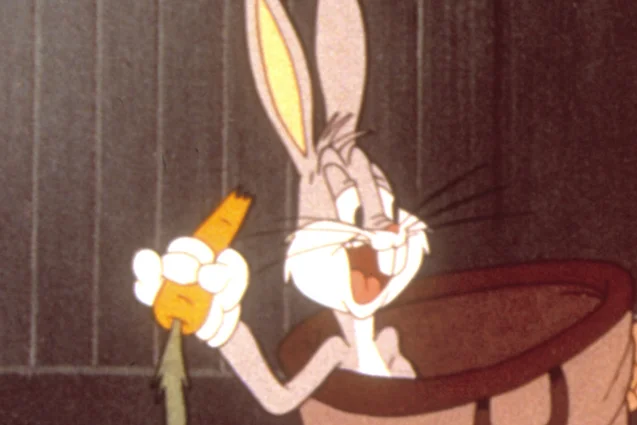
With a casual “What’s up, Doc?” and a nibbled carrot, this wisecracking rabbit outsmarted hunters, opera singers, and monsters to become Warner Bros.’ signature character and America’s favorite animated trickster. First appearing in his recognizable form in 1940’s “A Wild Hare,” Bugs was voiced primarily by Mel Blanc, whose Brooklyn-Bronx accent gave the rabbit his distinctive personality as a streetwise character who refused to be intimidated by anyone. The creation of various animators including Tex Avery and Chuck Jones, Bugs evolved from a wild animal into a sophisticated wit whose calm demeanor in the face of danger made him the perfect foil for more emotional adversaries like Elmer Fudd, Yosemite Sam, and Marvin the Martian.
Bugs’ popularity soared during World War II when his irreverent attitude resonated with soldiers, and his cartoons frequently included patriotic themes and war bonds promotions. His catchphrases entered the national lexicon, while his cross-dressing escapades (frequently disguising himself as a female rabbit to confuse his pursuers) pushed boundaries in children’s entertainment with a playfulness that disarmed potential critics. By 1954, Bugs had appeared in more theatrical shorts than any other cartoon character, and a 1998 TV Guide poll ranked him as the greatest cartoon character of all time—impressive longevity for a rabbit whose first official appearance had him facing down a shotgun with nothing but wit and a vegetable.
8. Morris the Cat
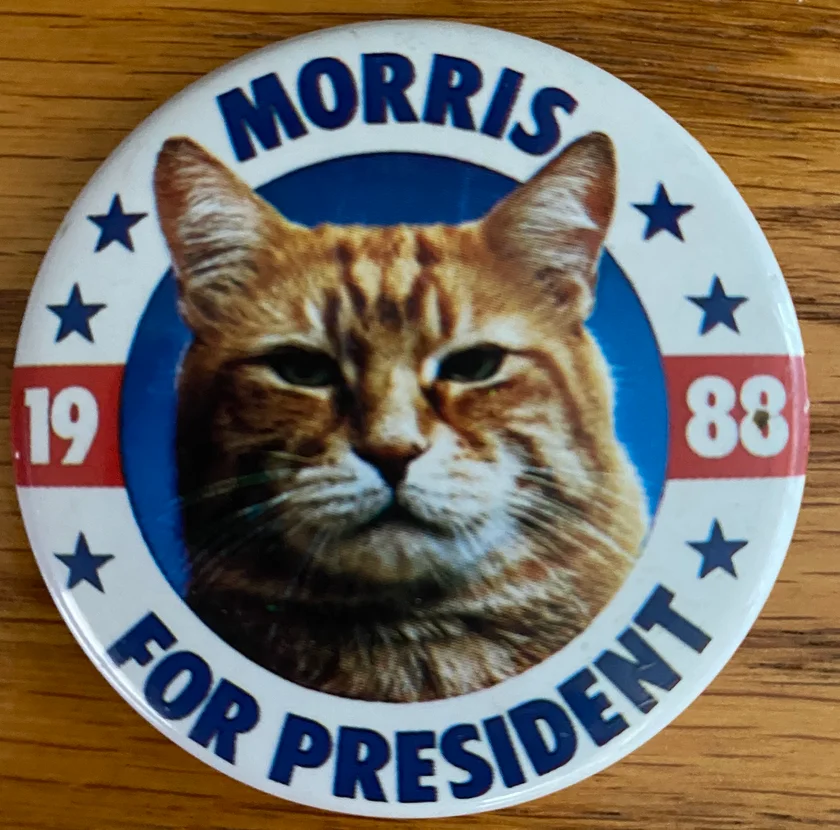
With his distinctive orange coat and finicky attitude, this advertising feline became the world’s most famous cat spokesperson, transforming 9Lives from just another pet food into a brand with personality. Introduced in 1968, Morris was actually a rescued shelter cat discovered at the Hinsdale Humane Society in Illinois, whose naturally aloof demeanor and expressive face made him perfect for portraying a discerning cat with gourmet tastes. The original Morris passed away in 1978, but subsequent orange tabbies continued the legacy, maintaining the character’s consistent image as the “world’s most finicky cat” for over 50 years of advertising campaigns.
Morris’s deadpan expressions and apparent disdain for anything less than perfect became so popular that he transcended commercial breaks to appear in two movies, receive thousands of fan letters, and even have mock presidential campaigns run in his name. The cat’s distinctive voice (provided for many years by John Erwin) delivered wry observations with perfect timing, establishing a personality so compelling that many viewers felt they knew Morris personally despite his limited screen time. The campaign’s genius lay in its understanding of cat owners’ perception that their pets were judging them—Morris just voiced what people already suspected their cats were thinking, creating an instant connection with anyone who had ever served dinner to a disapproving feline.
9. Spuds MacKenzie
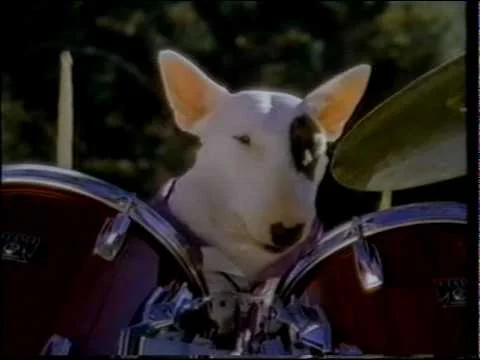
The “original party animal” wasn’t just a dog—he was a cultural phenomenon that transformed Bud Light’s image and created controversy around marketing beer with a canine character appealing to all ages. Introduced during the 1987 Super Bowl, Spuds was actually a female bull terrier named Honey Tree Evil Eye (or “Evie” for short), whose distinctive marking around one eye and stocky build made her instantly recognizable as she lounged surrounded by adoring “Spudettes” in commercials. The campaign positioned the beer as fun and sociable rather than focusing on taste, with Spuds’ silent charisma communicating a lifestyle rather than a product.
Spuds’ popularity exploded with merchandise including t-shirts, stuffed animals, and posters, making the dog a genuine celebrity who appeared on talk shows and at public events throughout the late 1980s. Critics argued that the canine mascot inappropriately appealed to children, eventually leading to congressional hearings about alcohol advertising and contributing to the campaign’s end in 1989, though not before Spuds had become embedded in pop culture. The original Spuds passed away in 1993, but the character made a ghostly comeback in Bud Light’s 2017 Super Bowl commercial—proof that even after decades, this party animal’s cultural impact remained strong enough to warrant resurrection.
10. Tony the Tiger
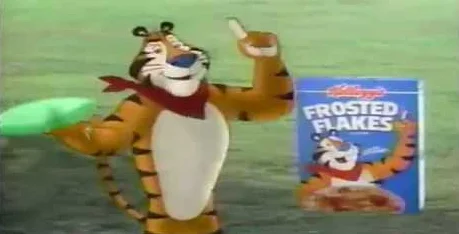
That booming voice declaring sugary cereal “Gr-r-reat!” has been waking up American households since 1952, making this anthropomorphic tiger one of advertising’s most enduring characters. Created for Kellogg’s Frosted Flakes, Tony evolved from a cartoonish orange cat walking on all fours to the muscular, bandana-wearing, athletic tiger recognized worldwide today. Voice actor Thurl Ravenscroft provided Tony’s distinctive bass for over five decades, creating such a perfect match between character and voice that many assumed the actor’s name was actually Tony himself.
Tony’s evolution mirrored changing attitudes toward fitness, as he transformed from simply eating cereal to actively promoting sports and exercise in commercials where he coached children to athletic success. His family expanded over the years to include Mrs. Tony, a son, and a daughter in various advertisements, though these characters never achieved the iconic status of the patriarch. Tony’s popularity transcended breakfast time, with the character appearing in video games, apps, and social media—where in the 2010s, Kellogg’s had to block inappropriate advances from people with “furry” interests, proving that some fans had developed attachments to the cereal mascot that went well beyond brand loyalty.
11. Snoopy

Charles Schulz’s beagle began as a normal pet in the Peanuts comic strip before evolving into the most complex and beloved canine character in American culture. Introduced in 1950, Snoopy initially walked on all fours and behaved like a typical dog, but by the mid-1950s had begun walking upright, developing an interior monologue, and creating alter egos including the famous World War I Flying Ace battling the Red Baron from atop his doghouse. His silent imagination conveyed through thought bubbles allowed readers to experience his rich fantasy life, which contrasted poignantly with his mundane existence as Charlie Brown’s pet, creating layers of meaning rarely seen in comic characters.
Snoopy’s dance of joy became a cultural touchstone, while his writing attempts (“It was a dark and stormy night…”) established him as the world’s most literary beagle. His transition to television in specials like “A Charlie Brown Christmas” (1965) required creative solutions to maintain his thought life, resulting in the distinctive “wah-wah” adult voices and Snoopy’s expressive pantomime that somehow conveyed complex emotions without dialogue. By the time NASA named their Apollo 10 lunar module after him in 1969, Snoopy had transcended his comic strip origins to become an American icon—so recognizable that a simple silhouette of his profile was enough for instant identification, making him arguably more famous than many human celebrities of his era.
12. Garfield
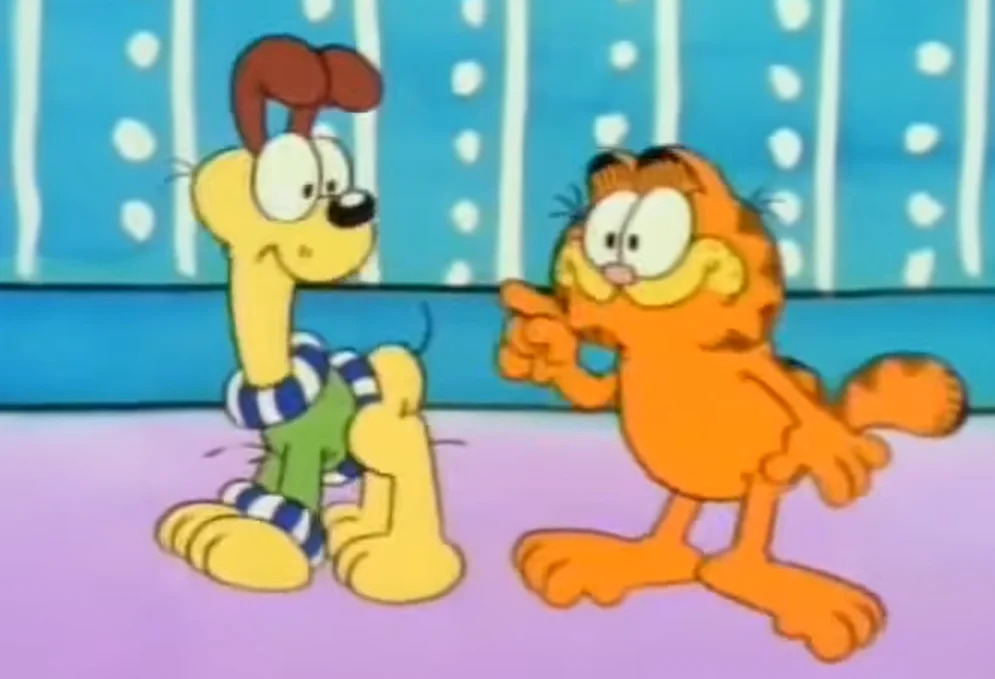
That lasagna-loving, Monday-hating orange cat captured the essence of contented laziness so perfectly that he became a worldwide phenomenon. Created by Jim Davis in 1978, Garfield’s cynical observations about his owner Jon Arbuckle’s sad dating life, the clueless dog Odie, and the general annoyances of existence resonated with readers who recognized their own pet’s apparent judgmental attitudes. The strip’s simple, relatable premises—Garfield wanting food, avoiding exercise, destroying furniture, or torturing the mailman—created a formula that worked across cultural boundaries, allowing the character to be syndicated in thousands of newspapers in dozens of languages.
Garfield’s merchandise empire grew to include everything from coffee mugs to credit cards, with those suction-cup car window toys becoming particularly ubiquitous in the 1980s. His transition to television specials and a Saturday morning cartoon maintained his sardonic personality through the deep, dry voice of Lorenzo Music (and later Bill Murray in the films), solidifying his character as the anti-Snoopy—a pet with no imagination but plenty of attitude. By the strip’s 40th anniversary in 2018, Garfield had appeared in the Guinness World Records as the world’s most widely syndicated comic strip, proving that international audiences shared a common understanding of feline attitudes that transcended language and cultural differences.
13. Topo Gigio
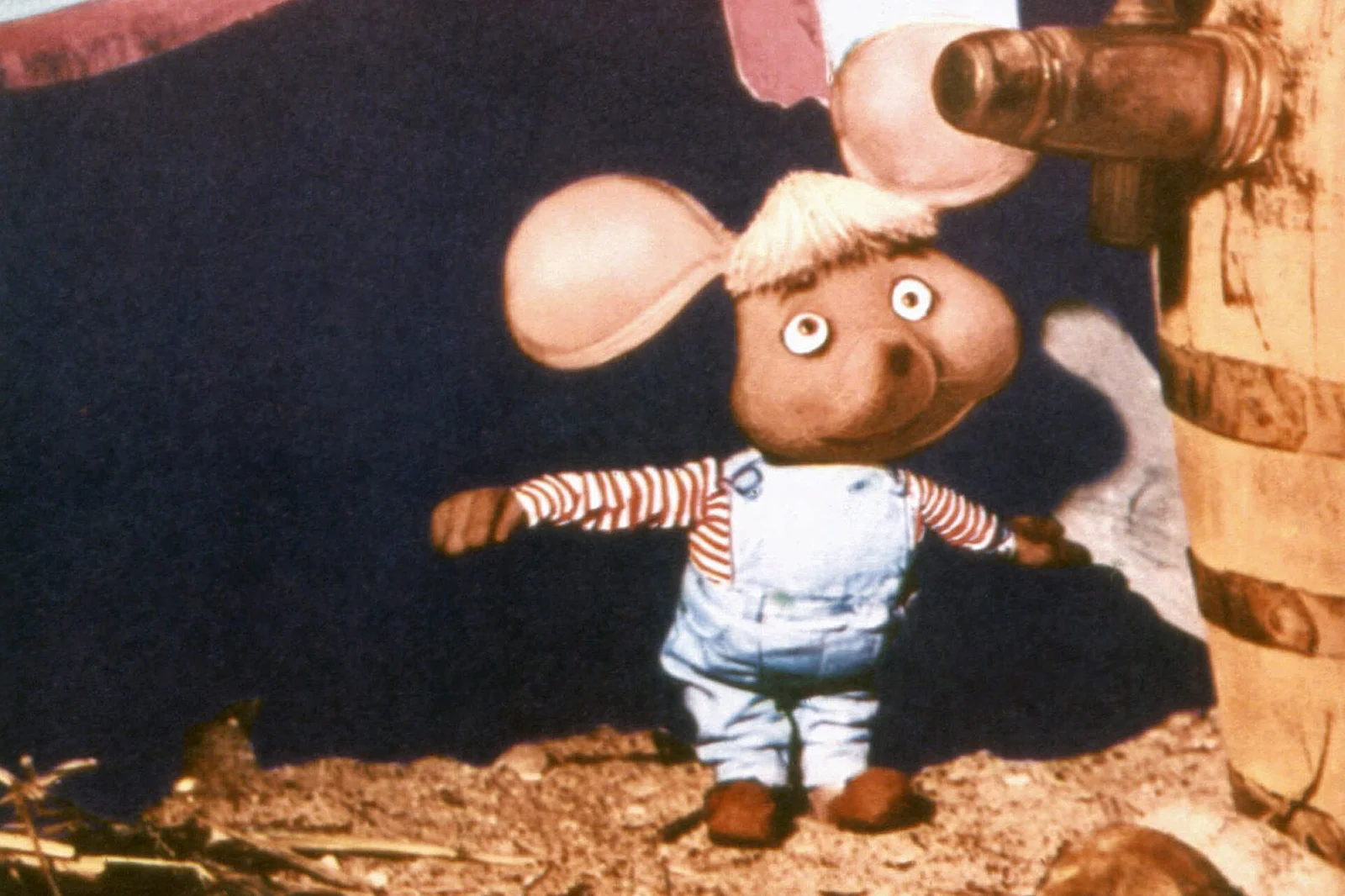
This 10-inch Italian mouse puppet with enormous ears and a childlike personality charmed American audiences through regular appearances on “The Ed Sullivan Show” from 1963 to 1971, despite—or perhaps because of—his limited English and heavy accent. Created by Italian artist Maria Perego, Topo Gigio required four puppeteers working in a special black box to create his distinctive movements, with his voice provided by Giuseppe Mazzullo and later Peppino Mazzullo. The character’s interactions with Sullivan became a highlight of the show, with the normally stiff host melting as the mouse called him “Eddie” and asked for a goodnight kiss, revealing a warm side to Sullivan that audiences rarely saw elsewhere.
While less remembered by younger generations in the United States, Topo Gigio remained a cultural phenomenon throughout Latin America, Japan, and Europe for decades after his American television appearances ended. His catchphrases, including his signature farewell “Kiss me goodnight, Eddie,” were mimicked by children worldwide, while his naive questions about American customs provided gentle comedy that worked across cultural boundaries. The puppet’s gentle personality offered a stark contrast to the rock bands and comedians appearing on the same variety show, creating a moment of sweetness that audiences came to expect each week—proving that even a simple mouse puppet with limited vocabulary could create genuine emotional connections with millions of viewers.
From faithful companions to marketing mascots, these non-human personalities somehow captured something essentially human that connected with audiences across generations. What’s remarkable isn’t just their fame, but their staying power—many remain instantly recognizable decades after their introduction, outlasting countless human celebrities from the same eras. Perhaps there’s something special about characters unburdened by human limitations who can represent our idealized traits: unwavering loyalty, clever resourcefulness, innocent joy, or even just the perfect sardonic comeback. In their not-quite-human faces, we recognized emotions and attitudes that felt deeply familiar, proving that sometimes the most human characters aren’t human at all.


